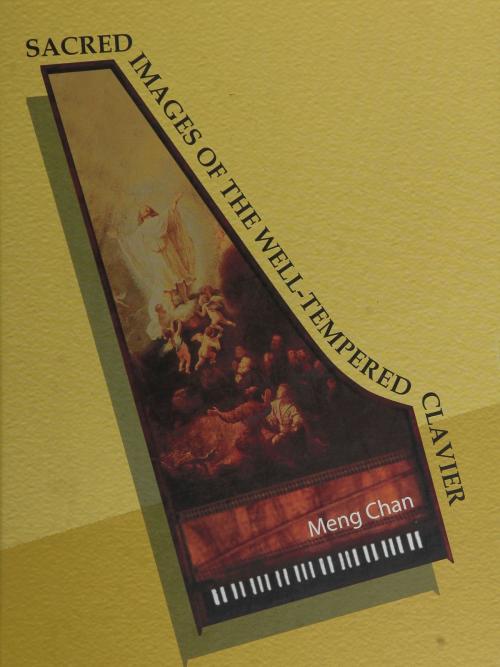Sacred Images of the Well-Tempered Clavier
Nonfiction, Entertainment, Music, Music Styles, Classical & Opera, Classical| Author: | Meng Chan | ISBN: | 9789834271305 |
| Publisher: | BookBaby | Publication: | November 10, 2015 |
| Imprint: | BookBaby | Language: | English |
| Author: | Meng Chan |
| ISBN: | 9789834271305 |
| Publisher: | BookBaby |
| Publication: | November 10, 2015 |
| Imprint: | BookBaby |
| Language: | English |
There was always a tradition of mysticism in religious music writing. For example. Cathedrals were built to facilitate the resonance of the perfect intervals, or try to, with the belief that the perfect intervals are holy and pure. Also, religious compositions often include cryptic symbols and images in the manuscripts. Bach must have been aware of this tradition and I believe that he decided to take this practice to a whole new level with these 48 prelude and fugues, and then was happy to let the music have a life of its own without the burden of their hidden themes. As a musician, he probably thought it wiser to conceal the method of his creative opus, for fear of his composition not being taken seriously because of its unusual premise; or was he only interested in using this method to find fresh thematic material? The hidden images however, must give the music very novel and unusual musical motives compared to other compositions by conventional means; this accounts for their originality and freshness. Personally, I think Bach honored the music manuscript in this manner because of the importance of the written notation as a technological device responsible for the elevation of his art throughout the centuries. After all, he had already written volumes of religious music with words, praising God. This one is specifically to thank God for the gift of musical notations. With an accurate system of notation, the art of music is able to rise above an oral or improvisational tradition, to allow every generation to learn, dissect, select and improve on the music of others. It is in this maimer, that Bach acquired his encyclopedic knowledge of his art; of course he is thankful for the humble musical notation, the vehicle of musical evolution. Looking at the front pages of this book, one common reaction may be: 'this is too good to be true! That all these images can be planted in the 48 prelude and fugues by design and planning, encapsulating Christianity's trilogy of its past, present and future, namely, the Old Testament, the New Testament and the second coming of Jesus.' If this is true, it certainly brings another layer of complexity to the already awe-inspiring and revered contrapuntal genius of the 48 prelude and fugues. In this book, I set out to prove that Bach most certainly did use theology in a systematic way as a springboard for this most arduous and complex musical creation. Like solving a puzzle, I offer a sacred image for every one of the 48 preludes and fugues. The clarity of the images comes from the consistency of Bach's code and the meaningful progression of their subject matter. One clue to its religious content is Bach's dedication to the glory of God in reference to this monumental opus. Bach inscribed the initial S.D.G \[Soli Deo sit Gloria- Glory to God Alone\] at the reverse side of the last fugue of book I (B-minor). This is a quotation from the Latin translation of Romans 16:27 and Jude 1:25. This autograph can be seen in the mus. ms Bach P 415 of Staatsbibliothek zu Berlin Prussischer Kulturbesitz. It turned out that Bach had infused meaning to the choice of any and all elements of musical composition. The elements such as time signature, key signature, note values, number of parts, the interval between the notes, the grouping of notes, the position of the parts plus all the elements of notation such as rests, accidentals and ornament can be used to signify something. Even the conspicuous absence of certain element is sometimes significant. Some meaning are purely visual, many are by associations and some are made clearer when the music is played; one example is the prelude of 'Jesus calms the Sea' where the harmonic range and progression re-enforces the narrative.
There was always a tradition of mysticism in religious music writing. For example. Cathedrals were built to facilitate the resonance of the perfect intervals, or try to, with the belief that the perfect intervals are holy and pure. Also, religious compositions often include cryptic symbols and images in the manuscripts. Bach must have been aware of this tradition and I believe that he decided to take this practice to a whole new level with these 48 prelude and fugues, and then was happy to let the music have a life of its own without the burden of their hidden themes. As a musician, he probably thought it wiser to conceal the method of his creative opus, for fear of his composition not being taken seriously because of its unusual premise; or was he only interested in using this method to find fresh thematic material? The hidden images however, must give the music very novel and unusual musical motives compared to other compositions by conventional means; this accounts for their originality and freshness. Personally, I think Bach honored the music manuscript in this manner because of the importance of the written notation as a technological device responsible for the elevation of his art throughout the centuries. After all, he had already written volumes of religious music with words, praising God. This one is specifically to thank God for the gift of musical notations. With an accurate system of notation, the art of music is able to rise above an oral or improvisational tradition, to allow every generation to learn, dissect, select and improve on the music of others. It is in this maimer, that Bach acquired his encyclopedic knowledge of his art; of course he is thankful for the humble musical notation, the vehicle of musical evolution. Looking at the front pages of this book, one common reaction may be: 'this is too good to be true! That all these images can be planted in the 48 prelude and fugues by design and planning, encapsulating Christianity's trilogy of its past, present and future, namely, the Old Testament, the New Testament and the second coming of Jesus.' If this is true, it certainly brings another layer of complexity to the already awe-inspiring and revered contrapuntal genius of the 48 prelude and fugues. In this book, I set out to prove that Bach most certainly did use theology in a systematic way as a springboard for this most arduous and complex musical creation. Like solving a puzzle, I offer a sacred image for every one of the 48 preludes and fugues. The clarity of the images comes from the consistency of Bach's code and the meaningful progression of their subject matter. One clue to its religious content is Bach's dedication to the glory of God in reference to this monumental opus. Bach inscribed the initial S.D.G \[Soli Deo sit Gloria- Glory to God Alone\] at the reverse side of the last fugue of book I (B-minor). This is a quotation from the Latin translation of Romans 16:27 and Jude 1:25. This autograph can be seen in the mus. ms Bach P 415 of Staatsbibliothek zu Berlin Prussischer Kulturbesitz. It turned out that Bach had infused meaning to the choice of any and all elements of musical composition. The elements such as time signature, key signature, note values, number of parts, the interval between the notes, the grouping of notes, the position of the parts plus all the elements of notation such as rests, accidentals and ornament can be used to signify something. Even the conspicuous absence of certain element is sometimes significant. Some meaning are purely visual, many are by associations and some are made clearer when the music is played; one example is the prelude of 'Jesus calms the Sea' where the harmonic range and progression re-enforces the narrative.















